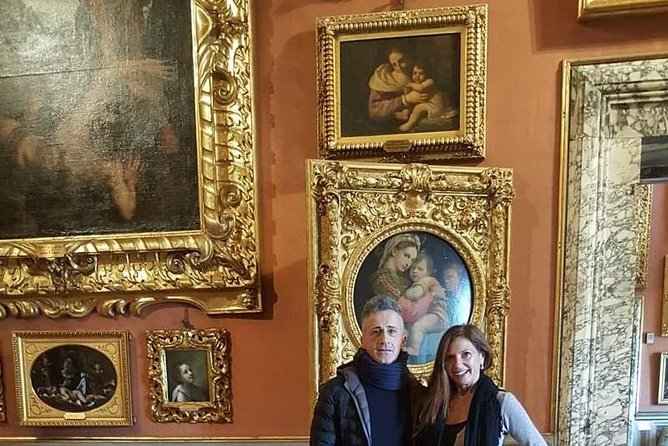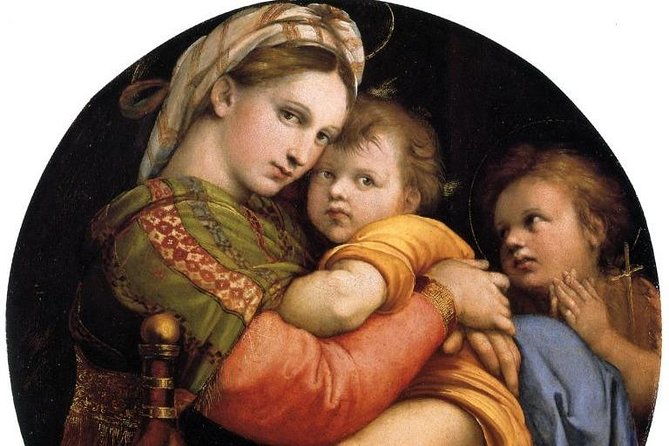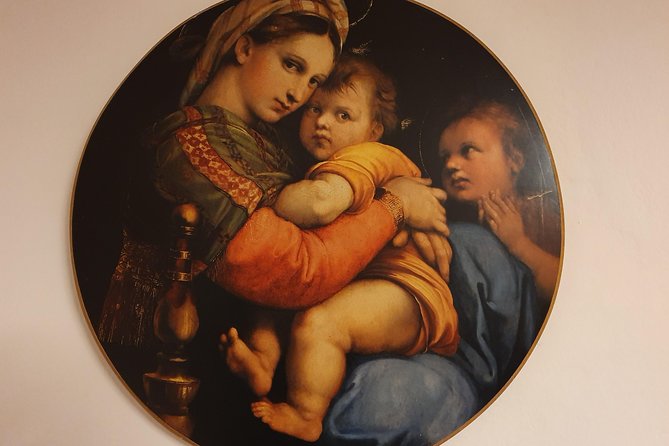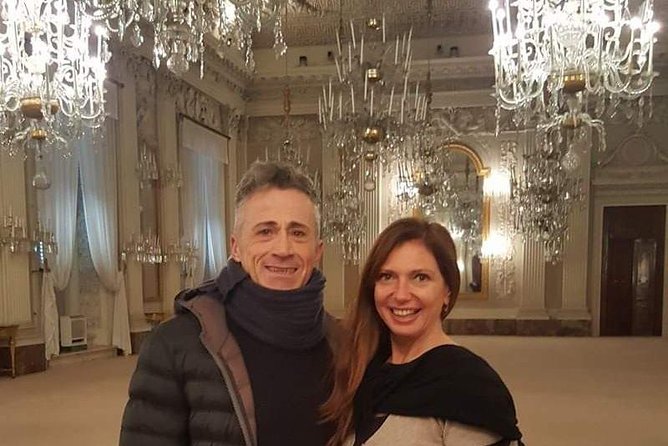Raphael’s extraordinary artistic journey unfolded during his transformative years in Florence, where he honed his skills amidst the vibrant cultural milieu. Influenced by the masterful works of Michelangelo and Leonardo, the young painter developed a distinctive style characterized by masterful use of color and light. His iconic portraits, such as the captivating "Fornarina" and "La Velata," showcased his innovative approach to composition and emotional depth, solidifying his legacy as a pivotal figure in Renaissance art. Explore the captivating tale of Raphael’s remarkable Florence years and explore how they shaped his enduring impact on the artistic landscape.
About Your Stay
- Raphael’s 500th anniversary was celebrated in 2020, highlighting his influential role as an Italian Renaissance artist renowned for his artistic mastery.
- Raphael’s transformative years in Florence from 1504 to 1508 facilitated his artistic growth, as he studied the works of Michelangelo and Leonardo da Vinci.
- The Palatine Gallery in Florence showcases some of Raphael’s most renowned masterpieces, including the portraits "La Velata" and "Fornarina," which demonstrate his technical virtuosity.
- Raphael’s artistic style was shaped by the influential works of Renaissance masters, including Leonardo da Vinci’s innovations and Michelangelo’s classicism and naturalism.
- Raphael’s enduring impact on Renaissance art is evident in his contributions to the development of portraiture, composition, and draftsmanship, which have been studied and emulated by generations of artists.
Celebrating Raphael’s 500-Year Legacy
In 2020, the world commemorated the 500th anniversary of Raphael’s passing, an influential Italian Renaissance artist renowned for his masterful paintings and frescoes.
To honor his legacy, a captivating 3-hour tour in Florence allows visitors to enjoy Raphael’s remarkable life and artistry. The tour takes participants through the Palatine Gallery and Palazzo Pitti, where they can admire iconic works like the alluring portrait "Fornarina."
This exclusive experience offers a rare glimpse into Raphael’s creative genius, shedding light on the artistic brilliance that captivated contemporaries like Leonardo da Vinci and continues to inspire art enthusiasts centuries later.
You can also read our reviews of more tours and experiences in Florence.
Raphael’s Transformative Years in Florence

Raphael’s time in Florence from 1504 to 1508 was a transformative period that profoundly influenced his artistic development.
During this formative stage, Raphael immersed himself in the city’s vibrant cultural scene, studying the works of Michelangelo and Leonardo da Vinci. He honed his skills in portraiture, developing a distinctive style that combined delicate details with a masterful use of color and light.
Raphael’s time in Florence also saw the creation of some of his most iconic paintings, including the Bagheria Altarpiece and the Conestabile Madonna. These works showcased his ability to blend classicism and humanism, laying the foundation for his later artistic triumphs.
The Palatine Gallery’s Raphael Masterpieces

The Palatine Gallery in Florence houses some of Raphael’s most renowned masterpieces, showcasing the artist’s exceptional talent and versatility.
Visitors can admire captivating portraits like "La Velata" (The Veiled Lady) and the sensual "Fornarina," which even captivated the likes of Leonardo da Vinci.
Raphael’s technical mastery and ability to convey emotion are evident in these works, which reflect his sophisticated understanding of color, composition, and the human form.
As part of the 3-hour Raphael tour, guests can enjoy the splendor of these Palatine Gallery treasures, gaining a deeper appreciation for the artistic genius of this Renaissance master.
Exploring Raphael’s Artistic Influences

Throughout his illustrious career, Raphael’s artistic style was heavily influenced by the prominent figures and movements of the Italian Renaissance. He drew inspiration from the innovations of Leonardo da Vinci, whose portrait of the Mona Lisa is said to have captivated Raphael.
Plus, Raphael’s work reflected the classicism and naturalism championed by Michelangelo, particularly evident in his heroic and idealized figures.
Raphael’s palette and technique were also influenced by the rich colors and luminous compositions of Venetian masters like Titian.
These diverse influences coalesced to create Raphael’s signature style, which combined technical mastery, humanistic themes, and a harmonious balance that defined the High Renaissance.
Raphael’s Portraits and Their Captivation

Raphael’s portrait masterpieces have long captivated both his contemporaries and modern audiences alike. His iconic works, such as the renowned "Fornarina", were admired by luminaries like Leonardo da Vinci for their technical mastery and emotional depth.
Raphael’s portraits possess a striking realism, capturing the essence of his subjects with exceptional clarity and attention to detail. His portraits are celebrated for:
- Exceptional realism and attention to detail
- Ability to convey the personality and spirit of the subject
- Technical mastery that elevates the medium of portraiture
These captivating works solidified Raphael’s reputation as one of the most accomplished portrait artists of the Italian Renaissance, influencing generations of artists to come.
- Tuscany Day Trip From Florence: Siena, San Gimignano, Pisa and Lunch at a Winery
- Cinque Terre Day Trip From Florence With Optional Hiking
- The Best Tour in Florence: Renaissance & Medici Tales – Guided by a STORYTELLER
- The Best Tour in Florence: Renaissance and Medici Tales
- Florence Pizza or Pasta Class With Gelato Making at a Tuscan Farm
- Small-Group Wine Tasting Experience in the Tuscan Countryside
Raphael’s Enduring Impact on Renaissance Art
Beyond his captivating portraits, Raphael’s lasting influence on Renaissance art can’t be overstated.
As a master of the High Renaissance, his artistic legacy has inspired generations of painters and sculptors. Raphael’s harmonious compositions, innovative use of perspective, and exceptional draftsmanship set new standards for Renaissance art.
His work had a profound impact on the development of portraiture, with his ability to capture the essence of his subjects.
Raphael’s enduring impact can be seen in the work of later artists, who emulated his techniques and sought to emulate his level of technical virtuosity.
His influential style continues to be celebrated and studied by art enthusiasts and scholars alike.
Raphael’s Mona Lisa Encounter in Florence
Raphael’s encounter with Leonardo da Vinci’s iconic Mona Lisa during his time in Florence left a lasting impression on the young artist.
This fateful meeting is believed to have occurred in the Basilica of the Santissima Annunziata, a location now commemorated by a plaque.
Raphael’s admiration for the Mona Lisa’s captivating gaze and Leonardo’s mastery of sfumato is evident in his own artworks, such as the Fornarina.
The experience is said to have influenced Raphael’s artistic development and his pursuit of technical perfection.
Encountering this masterpiece solidified Raphael’s reverence for Leonardo’s genius and fueled his own artistic ambitions.
- Raphael admired the Mona Lisa’s captivating gaze and Leonardo’s mastery of sfumato.
- This encounter influenced Raphael’s artistic development and pursuit of technical perfection.
- The experience solidified Raphael’s reverence for Leonardo’s genius and fueled his own ambitions.
Practical Information for the Raphael Tour
The 3-hour Raphael tour starts at Palazzo Pitti, the meeting point. Visitors will explore the Palatine Gallery, admiring Raphael’s finest works, including his captivating portrait Fornarina. The tour concludes at Piazza della SS. Annunziata, where Raphael first encountered the Mona Lisa. This private tour ensures an intimate experience, with a professional guide leading the way.
| Tour Inclusions | Accessibility | Booking Information | Group Size |
|---|---|---|---|
| Professional guide | Wheelchair accessible | Price: From $214.45 per person | Varies |
| Admission to Galleria Palatina | Stroller accessible | Free cancellation up to 24 hours | – |
| Private tour format | Service animals allowed | Confirmation received at booking | – |
| – | Near public transportation | Reserve now, pay later | – |
Worth The Stay
Raphael’s transformative years in Florence from 1504 to 1508 were pivotal in shaping his distinctive artistic style. Influenced by Michelangelo and Leonardo da Vinci, he developed a masterful use of color and light, showcased in iconic works like the "Fornarina" and "La Velata." Raphael’s enduring legacy as a pivotal figure in Renaissance art continues to captivate viewers today.
More Tour Reviews in Florence
- Hard Rock Cafe Florence With Set Menu for Lunch or Dinner
- Florence: Evening Classical Music Concert
- Florence: Guided Tour Europes Oldest Pharmacy
- Florence: Guided Walking Tour With Accademia Gallery
- Florence: Fast-track Uffizi Gallery Hosted Tickets
- Florence TÅG Culinary Experience & HZERO Museum – Tacos Menu
Not for you? Here's more things to do in Florence we have recnetly reviewed
- Florence: Uffizi Gallery Fast-Track Ticket
- Florence: Pasta & Tiramisu Cooking Class With Unlimited Wine
- Florence: Skip-The-Line Uffizi Gallery Timed Entry Ticket
- Wine Tasting Experience With Three Types of Tuscan Wine
- Best of Florence: Small Group Walking Tour
- Accademia Gallery See David Early Morning Guided Tour
- Florence: Lasagna and Spaghetti-Making Class
- Florence: Food Experience Guided Walking Tour
- Florence: 2-Hour Guided Bike Tour-Small Group
- Florence: Accademia and David Skip-the-Line Entry Ticket
- Florence: Luxury Wine Experience & Cold Cuts With Sommelier
- Florence: Accademia Gallery Timed Entry Ticket
